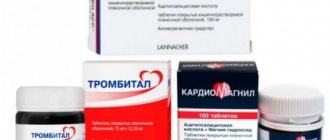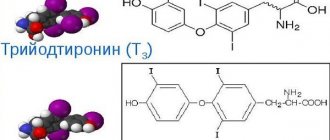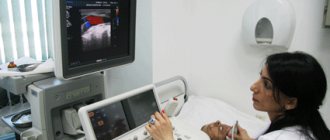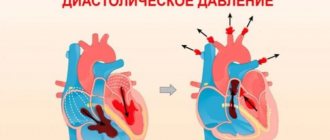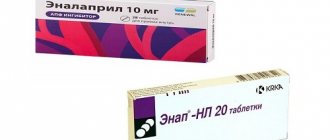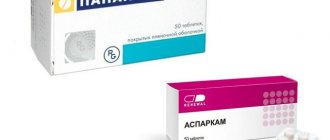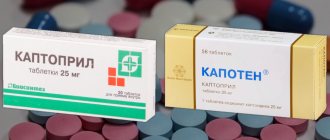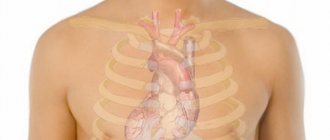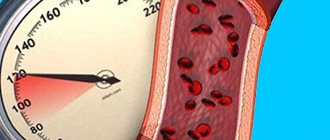Features of the action of anticoagulants
Drugs from this group effectively prevent venous thrombosis and complications of atrial fibrillation. The most popular drugs include Warfarin, which suppresses vitamin K and binds well to protein. The dosage must be selected by a specialist, since an excessive amount of the drug taken leads to uncontrolled bleeding. Doctors today often prescribe Eliquis to prevent thromboembolism after endoprosthetics operations. p/p/o 5 mg No. 60.
Is Detralex an anticoagulant or not?
- Detralex is classified as a venotonic . The active ingredient of the drug is the semi-synthetic flavonoid diosmin, which has a positive effect on venous tone.
- The action of Detralex is aimed at reducing the period of blood passage through the veins, strengthening the walls of capillaries and preventing the development of varicose veins. The drug is prescribed for varicose veins and hemorrhoids. Available in tablets and cream form for external use.
Drugs
How do antiplatelet agents work?
Drugs from this category stop the production of thromboxane B and are recommended for use for the prevention of heart attacks and strokes. They effectively prevent platelets from sticking together and forming blood clots. The most famous is Aspirin or its modern analogue Cardiomagnyl tab. p/p/o 75 mg+15.2 mg No. 100. It is often prescribed to prevent heart disease in a maintenance dosage over a long period of time. B ADP receptor inhibitors are prescribed after a stroke or heart valve replacement. Stops the formation of blood clots by introducing B glycoprotein into the bloodstream. B
Antiplatelet drugs - prescribed for what diseases?
Indications for the use of antiplatelet agents arise against the background of the following diseases:
- acute or chronic myocardial damage;
- previous ischemic stroke;
- hypertonic disease;
- blockage of blood vessels in the lower extremities;
- placental insufficiency;
- previous operations on the heart and blood vessels.
For heart diseases
Antiplatelet agents contraindications:
- stomach and duodenal ulcers;
- increased risk of bleeding;
- renal and heart failure;
- period of pregnancy and lactation.
Combination
Interaction with other thrombolytics (streptokinase) is prohibited. Many people are interested in what is the difference between antiplatelet agents and anticoagulants. The second drugs are similar in clinical effectiveness. But these are different types of drugs. Unlike antiplatelet agents, it has an active and rapid mechanism of action, a pronounced and short-term effect. They thin the blood and are suitable for preventing thrombosis. Often used in emergency situations.
Do not combine anticoagulants and thrombolytics at the same time. This significantly increases the risk of internal bleeding. It is important to understand that the use of other medications may increase or decrease the effectiveness of antiplatelet drugs.
During the period of use of antiplatelet agents, it is necessary to stop smoking and drinking alcohol. You should tell your dentist if you are taking these medications if you need to undergo a surgical procedure.
This is due to the fact that antiplatelet agents increase bleeding and reduce blood clotting. There is a risk of dangerous hemorrhage before surgery.
Therefore, before planning surgery, it is necessary to interrupt therapy for a week. They do this gradually. But before this, a person should consult a specialist.
Is phlebodia an anticoagulant or not?
- Phlebodia is a capillary-stabilizing drug with a pronounced venotonic and anti-inflammatory effect. The active ingredient diosmin improves the functionality and tone of veins, reduces blood stagnation and lymphatic pressure. The principle of action is similar to the drug Detralex. The advantage is a more compact technique.
- The drug Phlebodia is prescribed when venous and lymphatic insufficiency is detected. Active substances improve lymphatic drainage, increase capillary elasticity, eliminate swelling, pain, and trophic disorders. Phlebodia tablets rarely cause side effects such as allergies or gastrointestinal disorders.
How exactly do anticoagulants differ from antiplatelet agents?
Both groups of drugs are intended to thin the blood, but they do this in different ways. Anticoagulants act on blood proteins, interfering with the conversion of prothrombin to thrombin, which leads to the formation of blood clots. The mechanism of action of antiplatelet agents is aimed at blocking receptors on the surface of platelets. In the process of blood clotting, special mediators are activated, which are released by tissues when damaged. In response, platelets send chemicals that lead to blood clotting, while antiplatelet agents inhibit this process. B
- What are anticoagulants, which of them are classified as drugs of direct and indirect action
What are coagulants and anticoagulants?
Coagulants are substances that help thicken a liquid medium. Medicines containing coagulating agents accelerate the process of blood clotting.
According to medical classification, coagulants are divided into 2 groups:
- Direct-acting coagulants are drugs that stimulate the synthesis of physiological plasma clotting factors.
- Thrombin is a physiological component for topical use, obtained from blood plasma. The speed of thrombin ensures rapid blood clotting in blood vessels.
- Fibrinogen - used for bleeding in surgery, oncology, traumatology, gynecology.
- Indirect coagulants are drugs that prevent the formation of prothrombin in the liver, which is directly involved in blood clotting. Used for systemic action.
- Phytomenadione is a fat-soluble, fast-acting synthetic vitamin K.
- Vikasol – vitamin K for intramuscular administration of delayed action. Recommended for hemorrhoids, hepatitis, stomach ulcers.
Anticoagulants are drugs that prevent the formation of blood clots. Substances inhibit the formation of fibrin threads, stop the growth of existing blood clots, and enhance the effect of enzymes.
Anticoagulants are divided into 2 groups:
- Direct anticoagulants - reduce the functionality of thrombin in plasma. Direct acting anticoagulants include:
- Heparin sodium is an amorphous colorless powder of animal origin that binds thrombin.
- Gerudin is a substance contained in the salivary glands of leeches that prevents blood clotting.
- Indirect anticoagulants are drugs that prevent the concentration of prothrombin in the liver.
- Dicoumarin is a fine-crystalline drug whose action is aimed at disrupting the synthesis of prothrombin.
- Warfarin is a powerful semisynthetic drug with a strong anticoagulant effect.
Is Clexane a direct anticoagulant or not?
- Clexane is a modern analogue of heparin, prescribed for the prevention of venous embolism and thrombosis that occurs during surgical interventions, cardiac and respiratory failure, angina pectoris and other pathologies. Clexane is a direct-acting anticoagulant. With its participation, a number of chemical reactions in the blood are triggered - enzymatic coagulation.
- Injections with the blood-thinning anticoagulant drug Clexane are administered twice a day for two weeks. As with other anticoagulants, Clexane has a side effect - the likelihood of bleeding, especially in older patients. The drug is used only for monotherapy and is not combined with other substances.
Is Curantil an anticoagulant or not?
- Curantil tablets are prescribed for the prevention of arterial and venous thrombosis, as well as for disorders of cerebral and arterial circulation.
- The principle of operation of Curantil as an anticoagulant is to prevent platelets from sticking together into clots. In addition to the main function, the composition of Curantil tablets has an immunomodulatory effect, which helps minimize viral and colds. The complex effect is the advantage of this drug.
- Curantil is prescribed for the prevention of strokes and heart attacks, and also as a component of complex treatment of a specific disease.
For thrombosis
Antiplatelet agents - the current state of the issue
IN
In the pathogenesis of coronary heart disease, cerebral stroke, gangrene of the extremities and other disorders of the blood supply to organs and tissues, a significant place is occupied by atherosclerotic vascular lesions with a violation of the integrity of the intima, an imbalance of the blood coagulation-anticoagulation system and violations of the rheological properties of blood. These processes are closely related to each other [1]. When the endothelium is damaged, a blood clot forms and, as a result, a critical narrowing or complete closure of the lumen of the vessel occurs. In violation of blood rheology, aggregation of erythrocytes and platelets plays a decisive role [2].
With atherosclerotic damage to vessels of various locations, hypercoagulable changes occur due to an increase in the adhesive and aggregation activity of platelets, as well as erythrocytes, an increase in plasma procoagulation factors (the level of fibrinogen, fibrin-stabilizing factor, the appearance of fibrin-monomer complexes), a decrease in the activity of anticoagulants and inhibition of fibrinolysis [1, 2,9,16]. These processes are especially pronounced when coronary blood flow is destabilized (unstable angina, myocardial infarction). In these cases, intravascular macro- and microcoagulation occurs. Platelet aggregates formed already in the early stages cause microthrombi and disrupt coronary blood flow [2,16]. Speaking about the intimate mechanisms of thrombus formation, it should be noted
that most often the triggering role in the process of platelet adhesion is played by damage to the intima of blood vessels, for example, by an atherosclerotic plaque. Platelets come into contact with the subendothelial layer, in particular, with the main adhesion stimulator - collagen, swell, form processes and stick (adhere) in these areas [6]. Along with adhesion, the process of platelet aggregation occurs. The primary stimulus for aggregation is also provided by collagen released from the wall of the damaged vessel. To an even greater extent, this is facilitated by adenosine diphosphate (ADP) from erythrocytes hemolyzing in the area of damage, catecholamines and serotonin [6,7]. Labilization of the platelet membrane, which undergoes adhesion and aggregation, promotes the release of biologically active substances: ADP, adrenaline, norepinephrine (the so-called release reaction A). Later, granules containing lysosomal enzymes are secreted (release reaction B). As a result of the interaction of platelet and plasma factors, thrombin is formed in the hemostatic zone, which, even in small doses, triggers and completes the aggregation process. At the same time, blood coagulation occurs and the platelet clot is covered with fibrin. In this case, ADP plays a key role in platelet aggregation under the influence of any substances. When ADP binds to a specific receptor on the surface of a platelet, fibrinogen receptors (glucoproteins IIb–IIIa) are simultaneously activated, which creates conditions for the connection of fibrinogen and platelets. Activation of platelets leads to the subsequent release of various substances (including ADP) from the granules, which causes a second wave of aggregation.
This review is devoted to the comparative characteristics of various drugs from the “disaggregants” group. The currently most common drugs and their daily doses are presented in Table 1.
The most famous and still most popular drug in this group is
acetylsalicylic acid
.
For more than 100 years, this drug has been actively used in medical practice. The most widespread use of acetylsalicylic acid, in particular in acute coronary syndrome (ACS), began in the early 80s, but back in 1953 Kalgan published the first report on the use of acetylsalicylic acid for the prevention and treatment of coronary artery disease. Several significant studies (VA, RISC, ISIS-2, etc.) have convincingly demonstrated its ability to reduce the risk of acute myocardial infarction (AMI) and acute coronary death by 41–70%. The most convincing study was ISIS-2
(Second International Study of Infarty Survival, 1988) involving 17,000 patients: the effect on mortality of various types of therapy in the first hours of acute myocardial infarction was studied - streptokinase, acetylsalicylic acid, acetylsalicylic acid + streptokinase and treatment without these drugs.
The greatest effectiveness was achieved in the group where streptokinase and acetylsalicylic acid were used simultaneously. Compared to the control group, mortality was 42% lower. However, in the group of patients receiving acetylsalicylic acid without streptokinase, mortality was lower by 23% compared to the control group. In the studies VA, RISC, ISIS-2, various doses of drugs were used (from 75 to 1500 mg per day).
The 1990 RISC study The mechanism of action of acetylsalicylic acid is based on the irreversible blocking of cyclooxygenase involved in the synthesis of thromboxane A2 (Tx A2), and since the platelet does not contain a nucleus (there is no ability to synthesize new proteins), this blockade persists throughout their life - from 8 to 10 days ( Fig. 1). When using acetylsalicylic acid, there is no withdrawal syndrome or development of tolerance to it; bleeding is quite rare.
Rice. 1. Mechanism of action of acetylsalicylic acid
It is necessary to note some negative aspects of the use of acetylsalicylic acid. Firstly, about 30–40% of patients with ACS are unresponsive to acetylsalicylic acid. Secondly, in patients with gastritis and peptic ulcers, the risk of bleeding increases, and with concomitant gout, its exacerbation develops. Thirdly, acetylsalicylic acid blocks only one of the pathways of platelet activation and does not affect others (direct activation of glycoprotein receptors (GP IIb/IIIa) by thrombin, collagen, ADP). Acetylsalicylic acid does not block the primary adhesion of platelets to the damaged endothelium, nor does the attachment of fibrinogen to its receptors on the surface, which is a necessary component for their aggregation.
Another equally well-known drug, widely used 2-3 decades ago, is dipyridamole
. Dipyridamole is a phosphodiesterase inhibitor, increases the content of cAMP and cGMP in platelets, has vasodilator and antiplatelet properties.
Research has shown ( ESPS–1
,
ESPS–2
), in terms of effectiveness in reducing the incidence of transient ischemic attacks, strokes and mortality in cerebrovascular pathology, dipyridamole is close to acetylsalicylic acid; when used together, the effectiveness of treatment increases.
However, it should be noted that, like acetylsalicylic acid, this drug also has its negative aspects. Thus, the advisability of prescribing dipyridamole in addition to acetylsalicylic acid or ticlopidine during PTCA, CABG, and stent installation is not confirmed by data from multicenter studies (VACS). In case of stenosing atherosclerosis of the arteries and the presence of a significant number of collaterals, dipyridamole can cause the development of steal syndrome, as a result of which its use in acute coronary syndrome and myocardial infarction is contraindicated.
Due to the disadvantages of both described groups of drugs, the group of thienopyridines is currently of greatest interest for practical medicine. Ticlopidine has the most complete antithrombotic effect
[5,7].
Experimental studies of the mechanism of action of ticlopidine have shown that the drug is highly effective only in vivo. Studies of its effect on healthy volunteers have shown that ticlopidine is a potent inhibitor of ADP-induced platelet aggregation. Unlike acetylsalicylic acid, which inhibits only the second phase of ADP-inducer-induced aggregation, ticlopidine inhibits both phases. The drug also inhibits lamellar aggregation, no matter what inducer it is caused by: arachidonic acid, collagen, adrenaline, thrombin, or others. As a result, ticlopidine acts on the decisive final stage, common to all aggregation pathways: it inhibits the formation of fibrin bridges between platelets. At the same time (unlike acetylsalicylic acid) it does not affect the metabolism of arachidonic acid and thus does not reduce the production of prostacyclin by the walls of blood vessels. At the same time, acetylsalicylic acid and other non-steroidal anti-inflammatory drugs act only at the level of prostaglandin synthesis. This means that they only partially block platelet aggregation. Moreover, acetylsalicylic acid inhibits the production of prostacyclin, which itself is a natural inhibitor of platelet aggregation [7].
In addition to all of the above, ticlopidine normalizes platelet survival in cases where it is reduced (with angiopathy, after myocardial infarction), and also increases the plasticity (deformability) of the erythrocyte, apparently by improving the cellular glucose reserve.
At the same time, the drug reduces blood viscosity by reducing the level of plasma fibrinogen (Table 2).
These effects improve the rheological properties of blood and microcirculation.
To date, significant clinical material has been accumulated on various areas of use of ticlopidine - cardiovascular pathology, obliterating atherosclerosis of the vessels of the lower extremities, cerebral vascular disorders. As early as 1990, a study by Balsano et al. (STAI), in which ticlopidine was prescribed to patients with unstable angina (UA) while taking b-blockers, nitrates and calcium antagonists, a more than 2-fold reduction in the incidence of AMI was shown. The development of myocardial infarction during six months of observation was 10.9% of patients in the group receiving conventional treatment versus 5.1% in the group receiving ticlopidine in addition to conventional therapy (a decrease of 53.2%). Moreover, in the ticlopidine group, the number of fatal heart attacks and cases of vascular death decreased by 46.8% [19].
In another large CATS
(Canadian–American Ticlopidine Studi), which included 1053 patients who had recently (within the last 4 months) suffered a thromboembolic stroke, demonstrated a 30.2% reduction in the risk of myocardial infarction, recurrent stroke or vascular death [9].
Similar results were presented by French researchers Aican YC et al., 1989 [14,15] and in the Swedish multicenter study STIM
[13]. The French authors observed 169 patients, and the STIM study included 687 patients with intermittent claudication. Ticlopidine was prescribed according to the standard method of 250 mg twice a day. In the STIM study, the number of acute myocardial infarctions decreased by 40% and mortality from MI decreased by 2 times in the ticlopidine group compared with controls. The number of vascular disorders decreased by 38%, and they did not have severe consequences and proceeded more favorably. In a study by Aican YC et al., in addition to improving peripheral blood flow, it was found that cardiovascular complications occurred in only 2 patients in the ticlopidine group, versus 9 in the control group. According to the TASS study (Ticlopidine Aspirine Stroke Study), which was carried out to compare the preventive activity of ticlopidine (500 mg/day) and acetylsalicylic acid (1300 mg/day) in patients with temporary ischemic attacks, the effectiveness of ticlopidine was significantly higher with fewer side effects. The risk of fatal-nonfatal stroke was 24% lower in the ticlopidine group. In the first year of observation, the number of strokes was 48% less than in the acetylsalicylic acid group.
The most serious disadvantage of ticlopidine is the gradual development of the therapeutic effect: the antiplatelet effect usually appears after 24–48 hours and reaches a maximum after 3–5 days of taking the drug. To completely suppress ADP-induced platelet aggregation, it is necessary to use ticlopidine at a dose of 500 mg/day. at least 5 days. In addition, you need to remember the need to carefully monitor the level of platelets and neutrophils in the blood to eliminate the risk of developing cytopenias. Thus, the pharmacological characteristics of ticlopidine do not allow its use in emergency therapy. clopidrogel is currently more attractive
, which, like ticlopidine, is a thienopyridine derivative.
Clopidrogel is similar in mechanism of action to ticlopidine, but has a faster pharmacodynamic effect, which is registered already in the first hours of use. Currently, two studies conducted in this direction are of greatest interest:
– CAPRI
– this study studied 19,000 patients with atherosclerotic vascular lesions of various locations and demonstrated its high safety with long-term use (from 1 to 3 years) at a dose of 75 mg, as well as a significant reduction in the risk of developing AMI by 19%.
– CURE
– the purpose of this study was to compare the effectiveness of clopidrogel in combination with acetylsalicylic acid and acetylsalicylic acid monotherapy in the treatment of patients with ACS without ST-segment elevation. The undoubted advantages of the combination of clopidrogel and acetylsalicylic acid have been revealed. The reduction in the relative risk of cardiovascular complications over 9 months of observation was 20%. Benefits begin to appear within 2 hours of taking a 300 mg loading dose (S. Yusuf, ACC, 03/19/2001).
In recent years, new groups of antithrombotic agents have been created.
IIb/IIIa platelet receptor blockers
are the youngest group of the entire class of antiplatelet drugs used in cardiology. The mechanism of action of this group of drugs is to inhibit the general final stage of platelet aggregation - the process of building a platelet thrombus through the formation of bridges between neighboring activated platelets from fibrinogen molecules. At the same time, the antiaggregation effect of IIb/IIIa blockers is nonspecific with respect to the action of any aggregation inducers and theoretically should exceed the effect of drugs that prevent platelet aggregation under the influence of one or a group of agonists.
The first representative of group IIb/IIIa blockers used for therapeutic purposes in patients with acute coronary syndrome was a drug made on the basis of monoclonal antibodies to platelet membrane glycoproteins IIb/IIIa - abciximab
. Currently, this group is represented by several drugs (Table 3).
Various types of blockers have been studied quite widely - monoclonal antibodies (absiximab), synthetic peptide inhibitors (eptifibatide), non-peptide blockers (tirofiban, lamifiban) in ACS.
These drugs were associated with hopes for a radical revolution in the treatment of patients with ACS, but none of them has yet been introduced into widespread practice. Some research ( CAPTURE
, the invasive arm of
the PRISM–PLUS
,
PURSUIT
), which included patients with ACS who underwent percutaneous coronary angioplasty and stenting, demonstrated positive results when using Tc IIb/IIIa receptor blockers (34% reduction in the risk of death and AMI).
Other studies were carried out simultaneously ( PARAGON
,
PRISM
, non-invasive branch
PRISM-PLUS
,
PURSUIT
, etc.), where the effectiveness of short-term use of fibrinogen receptor blockers in the absence of interventional angiological interventions was shown in patients treated with acetylsalicylic acid and heparin. The above studies involved 18,031 patients. There was a significant decrease in the risk of death and AMI in the first 30 days of observation (from 13.3 to 11.7%, i.e. by 12%). Although these studies examined drugs from the same class, they all have certain differences in pharmacokinetics and have different effects on platelet receptors. When re-analyzing the results of the PURSUIT study (10948 patients), it was shown that the effectiveness of eptifibatide (test drug) varied in different countries - in the USA it was more effective than standard therapy (heparin with acetylsalicylic acid), in Canada and Western Europe the effectiveness of the compared methods was comparable, and in a number of Eastern European countries the number of deaths and AMI in the group of patients treated with eptifibatide was higher. The reasons for these differences are unclear, but the high incidence of active early intervention may have contributed to the persistence of painful attacks in the United States (up to 23.4%) - in contrast to Canada and Europe. Data from angiographic studies conducted as part of this study in US clinics indicate the frequent inclusion in the study of patients with minimal vascular damage to the coronary arteries. It is possible that in this situation in the United States, prognostically significant severely ill patients were excluded from the analysis. In the conditions of our country, in the absence of ample opportunities for urgent coronary angiography and interventional interventions in patients with ACS without ST-segment elevation, the effectiveness of this class of drugs seems doubtful.
In a further study GUSTO–IV ACS
recently conducted, doubts regarding blockers of TC glycoprotein receptors were confirmed. The results of this study, in which the effect of using absiximab against the background of standard therapy with acetylsalicylic acid, unfractionated (85%) or low molecular weight (13%) was studied in 7800 patients with UA and AMI without a Q wave in the first 24 hours after an attack of rest angina lasting more than 5 minutes. heparin, b-blockers (77%), nitrates (61%), angiotensin-converting enzyme inhibitors (36%), were reported in Amsterdam in August 2000 at the European Congress of Cardiology. The study also examined different durations of absiximab administration (24 and 48 hours) compared to placebo. A peculiarity of the study was the inclusion of only those patients who were not scheduled for scheduled coronary angiography and myocardial revascularization within 30 days. Negative results were obtained: neither on the 7th nor on the 30th day of observation was there any effect of the drug (death and AMI in the groups, respectively, were 4.5 and 8.0% for placebo, 4.0 and 8.2 % in the group with absiximab administration within 24 hours, 4.1 and 9.1% in the group with 48-hour administration). Such results are associated with a sufficient effect of basic therapy.
Thus, at present, the most preferable from the point of view of the effectiveness and cost of drugs is the use of the group of thienopyridines in the form of monotherapy or in combination with other drugs, since they are powerful inhibitors of platelet aggregation and, therefore, effective modern antithrombotic drugs used in the clinic of internal medicine. diseases.
Literature:
1. Gritsyuk A.I., Amosova E.N., Gritsyuk I.A. Practical hemostasiology. – K: Health, 1994. – 256 p.
2. Bokarev I.N., Shchepotin V.M., Ena Ya.M. Intravascular blood coagulation. – K.: Health, 1989.–240 p.
3. Maksimov Yu.M. Coagulants and anticoagulants//Pharmaceutical Journal.–1989. - No. 3. – P.19 – 22.
4. Barkagan Z.S. Hemorrhagic diseases and syndromes. – M.: Medicine, 1988. – 528 p.
5. Ticlopidine // Lancet. – 1991 – Vol.337. – N8739.–P 459–460.
6. Platelet aggregation: Torrent export Ltd., 1990– 12 p.
7. Ticlid (liclopidine). Product Monograph., 1993. – 55 rub.
8. Nelson E. – Current Use of antplatelet drugs in stroke syndrome in the USA. Atherosclerosis II: Recent Progress in Atherosclerosis Research // Ann. Acad.Sci.– 1999.–N.–4. – Vol.598. – P.368–375.
9. Gent M, Easton YD, Hachinski VC et.al. The Canadian American Ticlopidine Study (CATS) in Thromboembolic stroke // Lancet. –1989.–Vol.1. – N8649. – P.1215–1220.
10. Harbisoa YW – Ticlopidiae versus aspirin for the prevention of recurrent stroke // Stroke. – 1992.–Vol.23, – N12 – P. 1723–1727.
11. Hass WK, Easton YD, Adams HP A Randomized trial comparing ticlopidine hydrochloride with aspirin for the prevention of stroke in high risk patinets // W.Engl.Med.J. – 1989. – Vol. 321.– P. 501–507.
12. Grctta YY, Norris TW, Kamm V. Prevention of stroke with tidopidine: Who benefits the most? // Neurology. – 1992. – Vol.42. – P. 111–115
13. Jaizon L, Bergqvst D., Bobeig G. Prevention of myocardial infliction and stroke in patients with intravitreal claudication: effect of ticlodipine. Results from STIMS the Swedish Ticlopidine Multicenter Study//J. Iat.Med. – 1990. – Vol.227.– P.S01–308.
14. Aican YC, Blanchard Y., Boissel YP Multicenter double – blind study of ticlopidine in the treatment of intermittent claudicaution and the prevention of its complications // Angiology. – 1988.– Vol.39. –N9. – P.802–811.
15. Aican YC, Panan E. Ticlopidine in the treatment of peripheral occlusive arterial disease//Seminars in Thrombosis and Hemostasis – 1989. – Vol.5.–N2. – P.167–170.
16. Boossel YP, Peyrieux YF, Destors YM Is it possible to reduce the risk of cardiovascular events in subjects suffering from intermittent claudication of the lower limbs? // Thrombosis and Haemostasis. – 1989. – Vol.62.– N2 – P.681–685.
17. Oster Y., Huse DM, Licey MI, Epstein AM Cost–effectiveness of ticlopidine in preventing stroke in high–risk patients//Stroke.– 1994. – Vol. 25. –N6.– R.1119–1156.
18. The Dutsh TA Trial Study Group. A comparison of two doses of aspirin (30mg vs. 283mg a day) in patients after trancient ischemic attach or minor ischemic stroke// WEIM – 1991. – Vol.325. – N.18. –P. 1262–1266.
19. Balsano F., Rizzon P., Violi F. Antiplatelet treatment with ticlopidine in unstable angine. A controlled multicenter clinical trial // Circulation. – 1990. – Vol. 82. – N1. – P.17–26.
20. Easton YD The role of ticlopidine in the management of stroke // Ibid. – P.12–20.
21. Turpie A.YY. Strategies in the risk reaction for stroke. Highlights of lectures // Bulletin Sanofi. – 1991. – Adis Yut. – 6 p.m.
22. The Timad Study Group. Ticlopidine treatment reduces the progression of nonproliferative diabetic retinopathy // Arch. Ophthalmology. – 1990. –Vol.108. –N 11.– P.1577–1583.
23. Peto R., Gray R., Collins R. Randomized trial of prophylactic daily aspirin in British male doctors // Brit.Med.Y.– 1988.–Vol.296.– P.313–315.
24. Levy M., filler DR, Kauffman DW et.al. Major upper gastrointestinal tract bleeding. Relation to the use of aspirin and other nonnarcotic analgesic//Arch. Intern. Med. – 1988. – Vol.48. – R.281–285.
Is Pradaxa a direct or indirect anticoagulant?
- The anticoagulant drug Pradaxa is the trade name of the active substance dabigatran exsilate. The medicine is prescribed by a doctor to prevent the formation of blood clots.
- Pradaxa blocks the final stage of thrombin, preventing plasma thickening in the vessels. The drug has limitations and is prescribed for the prevention of thromboembolism and atrial fibrillation. For example, for coronary heart disease and the presence of blood clots, Warfarin and another type of anticoagulant are prescribed.
- Pradaxa affects kidney function and requires constant monitoring. The effectiveness of Pradaxa as a direct anticoagulant has been proven. If side effects occur, doctors select a different type of anticoagulant drug.
Capsules
Is Xarelto a direct or indirect anticoagulant?
- The active ingredient in Xarelto, a direct-acting anticoagulant, is rivaroxaban. When taking Xarelto, one of the blood clotting factors is destroyed, which prevents the formation of a blood clot.
- The drug is prescribed for deep varicose veins of the leg and pulmonary embolism. Side effects include low blood pressure, headache, allergies , etc. Clinical studies have proven that Xarelto is more effective than Pradaxa.
- Xarelto is prescribed only for the prevention of thrombosis after surgery and is taken strictly according to the regimen in a certain dosage.
Useful reading:
- Composition of a first aid kit
- Allergy medications
- Interaction of drugs with each other and with food
- The drug Bisoprolol
- Drug Modelform
